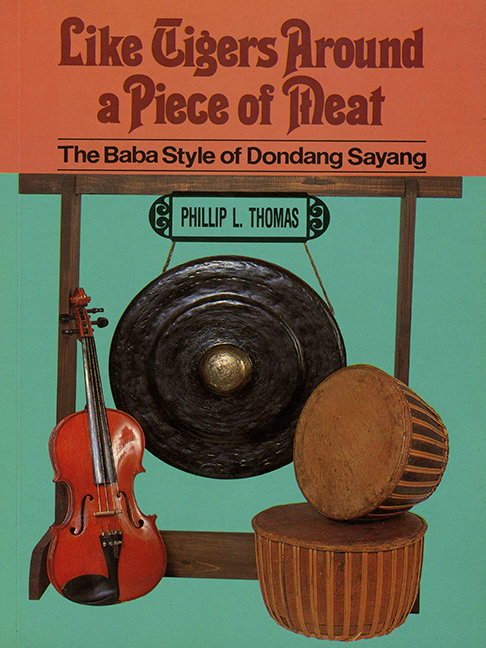5 - MALAY AND BABA AESTHETICS
Published online by Cambridge University Press: 21 October 2015
Summary
The two pantun sequences discussed earlier point out some subtle differences between Malay and Baba aesthetic values. As Tengku Lah Husny has suggested, Malay pantun avoid speaking directly to the question. We have seen how the high-level theme of love in the Rahim-Fatimah poems, although consistently held throughout the sequence, is suggested in the first two poems and is never again directly referenced. Further misdirection is created through scintillating and artful variation in the metaphoric and modal levels. The audience and the competing singers must be constantly alert to these variations, seeking the sense in which they constitute answers to the previous pantun and searching for further variations for the next reply. The viewing of Malay performances clouds even further the direct apprehension of the theme: songs of wretchedness or sea disasters are presented by singers in glittering clothing and with not unsmiling faces, and the movements of the singers follow the music, but not the lyrics. Each pair of joget dancers faces a different direction. The violin, the drums and gong, and the singer all play tc the greatest extent possible three parts that eventually, almosi reluctantly meet. Nothing is allowed to point towards the theme. I: pantun are, as Malays assert, the heart of Malay culture, ther Dondang Sayang is its ultimate perfection, for such apparent disorder can only inhabit an art form in which underlying order is abundant, however covertly it may be hidden.
The Baba presentation of Dondang Sayang closely follows that of the Malay. The complex music and the poetic form are the same Visually, the newcomer might note that the clothing is less glittering, that Baba men do not wear traditional or ethnic clothing while singing. More significant differences lie in the use of words and exploitation of the first couplets.
Babas themselves are quick to point out that Baba Malay is not the same as that spoken by the Malays themselves.
- Type
- Chapter
- Information
- Like Tigers Around a Piece of MeatThe Baba Style of Dondang Sayang, pp. 24 - 36Publisher: ISEAS–Yusof Ishak InstitutePrint publication year: 1986

